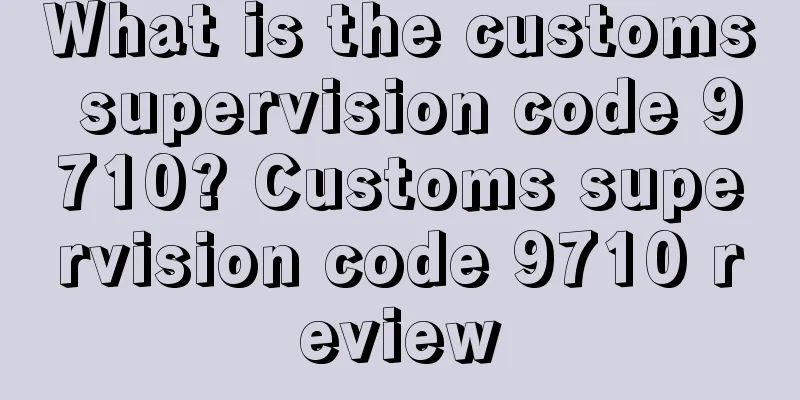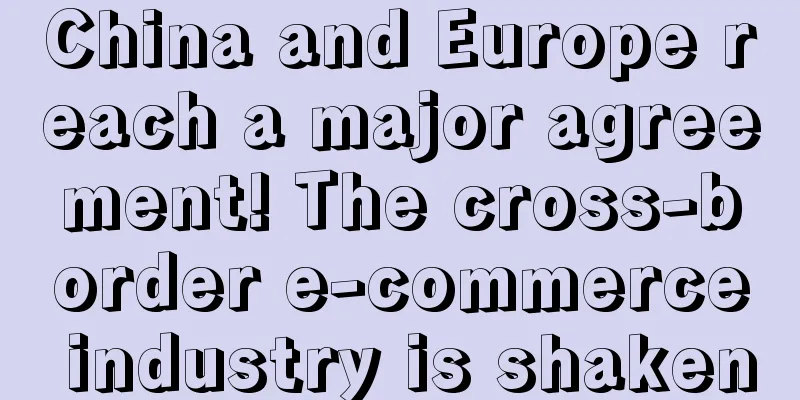What is the customs supervision code 9710? Customs supervision code 9710 review

|
Customs supervision code 9710 is referred to as "cross-border e-commerce B2B direct export" and is applicable to goods directly exported by cross-border e-commerce B2B. Start time July 1, 2020 introduce The cross-border e-commerce B2B direct export model refers to: domestic enterprises use cross-border e-commerce platforms to display online products and corporate information and establish connections with foreign companies, complete the communication, ordering, payment, and fulfillment processes online or offline, and realize the export of goods. First, the cross-border e-commerce B2B export supervision pilot will be carried out in Beijing Customs, Tianjin Customs, Nanjing Customs, Hangzhou Customs, Ningbo Customs, Xiamen Customs, Zhengzhou Customs, Guangzhou Customs, Shenzhen Customs and Huangpu Customs. Based on the pilot results, it will be replicated and promoted in customs across the country in a timely manner. Application Requirements Enterprises that choose cross-border e-commerce B2B direct export ( 9710 ) need to upload the online order screenshots generated by the trading platform and other electronic transaction information before declaration, and fill in the key information in the online order such as the name of the consignee, the name of the goods, the number of pieces, and the gross weight. Enterprises that provide logistics services should upload electronic logistics information. Customs declaration agents should fill in the industrial and commercial information of the entrusted enterprise corresponding to the goods. Orders that complete online payment on the trading platform can choose to transmit their payment information. Application Process For cross-border e-commerce B2B export goods with a single invoice value exceeding RMB 5,000 , or involving certificates, inspections, and taxes , enterprises should go through customs clearance procedures through the H2018 Customs Clearance Management System; for single invoice values within RMB 5,000 (inclusive) and not involving certificates, inspections, and taxes, enterprises can go through customs clearance procedures through the H2018 Customs Clearance Management System or the cross-border e-commerce export unified version system. Enterprises should submit declaration data and transmit electronic information to the customs through the cross-border e-commerce customs clearance service system and cargo declaration system of the " International Trade ' Single Window ' Standard Edition " or " Internet + Customs " . Among them, cross-border e-commerce B2B export-related electronic information messages will continue to use the existing B2C access channel mode of the cross-border service system, and newly support the import of B2B export declaration messages; the cargo declaration system supports the entry and import of B2B export declarations according to the existing mode.
Export Process
References
|
<<: What is USDA certification? USDA certification review
Recommend
The seller offers a reward of 500,000 yuan to find the prankster! The operator was found to have blackmailed the former company after leaving the company!
▶ Video account attention cross-border navigation ...
Analyze the fundamental reasons why inventory was drastically reduced
1. Not enough staff 2. Poor treatment of employee...
What is MiJingTong ERP? MiJingTong ERP Review
Mijingtong Cross-border E-commerce ERP is a must-h...
In 2021, there will be 230 million online shoppers in the United States! Four factors determine brand purchase intention
It is learned that according to Statista data, the...
What is WowLister? WowLister Review
WowLister is a tool that can convert Amazon produc...
Amazon's major attribute update! A comprehensive overhaul of this category
Recently, Amazon released an announcement in the ...
Voting for the 2024 US election begins, and consumer wait-and-see sentiment may affect retail performance
It is learned that the 2024 US presidential electi...
What is Vsuyi Supply Chain? Vsuyi Supply Chain Review
Guangdong Weisuyi Supply Chain Management Co., Ltd...
What is Ninja Outreach? Ninja Outreach Review
Ninja OutREACH is a social platform marketing anal...
What is 6PM? 6PM Review
6PM is an American online retail store and a sub-b...
Amazon sellers on these two sites will explode next year!
Cross-border Business School Information and skil...
What is The Carlyle Group? The Carlyle Group Review
The Carlyle Group is one of the world's larges...
What is the Libra Association? Libra Association Review
The Libra Association, the governing body behind F...
What is Haihuan? Haihuan Review
Haihuan.com is a website for overseas shopping and...
What is Profit Scraper? Profit Scraper Review
Profit Scraper is basically a cloud-based software...









